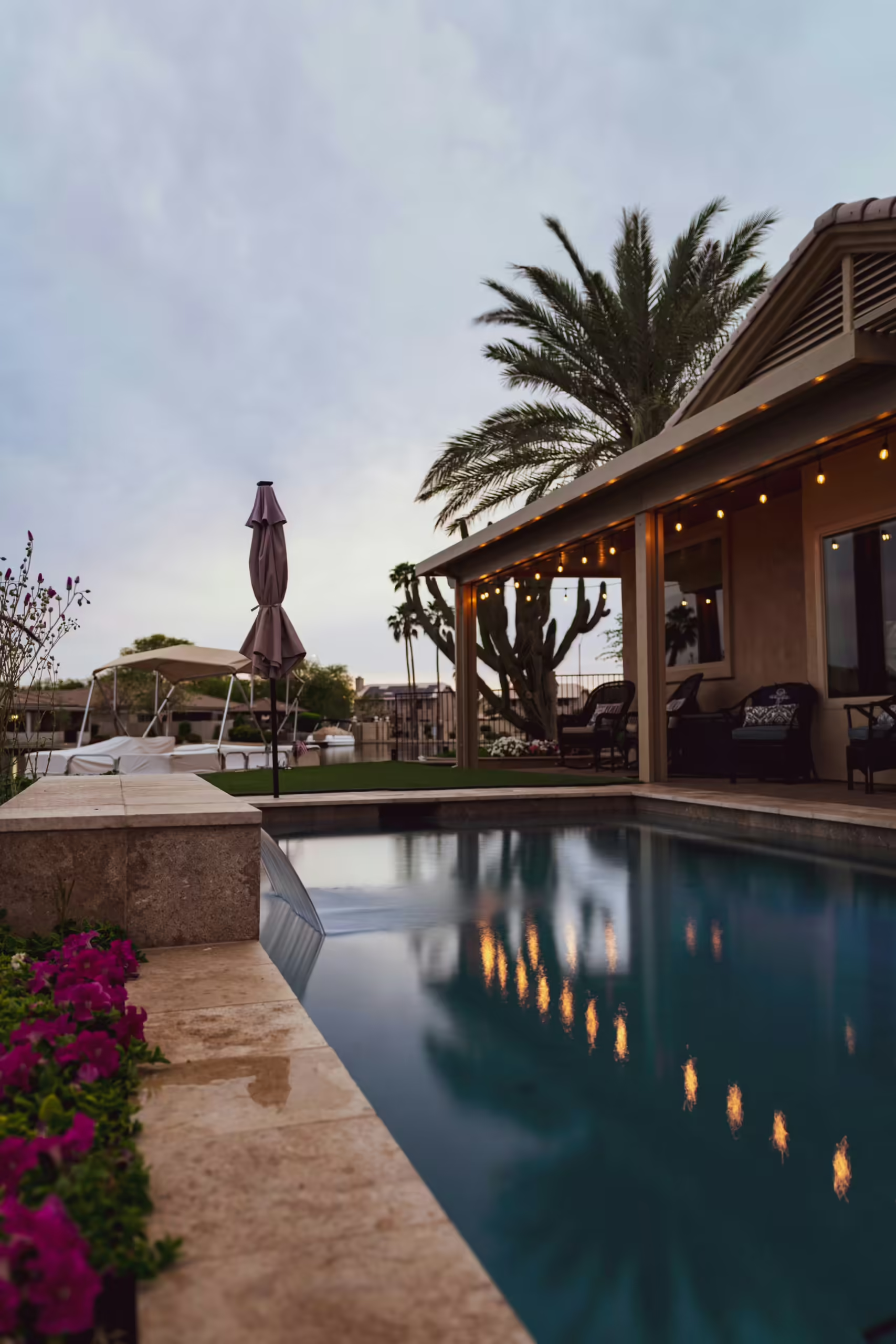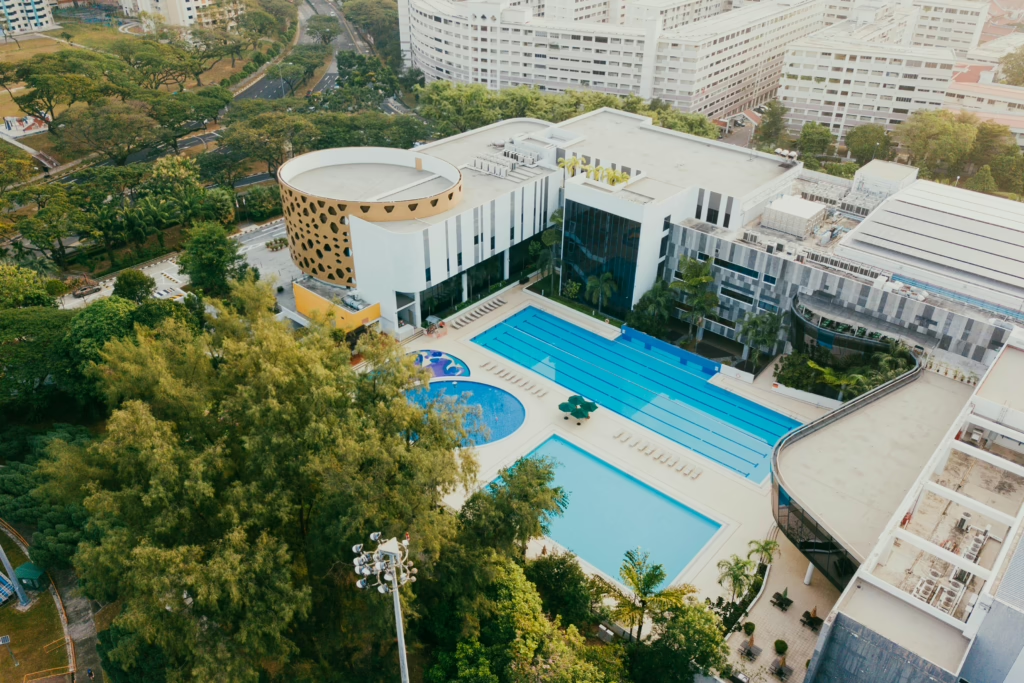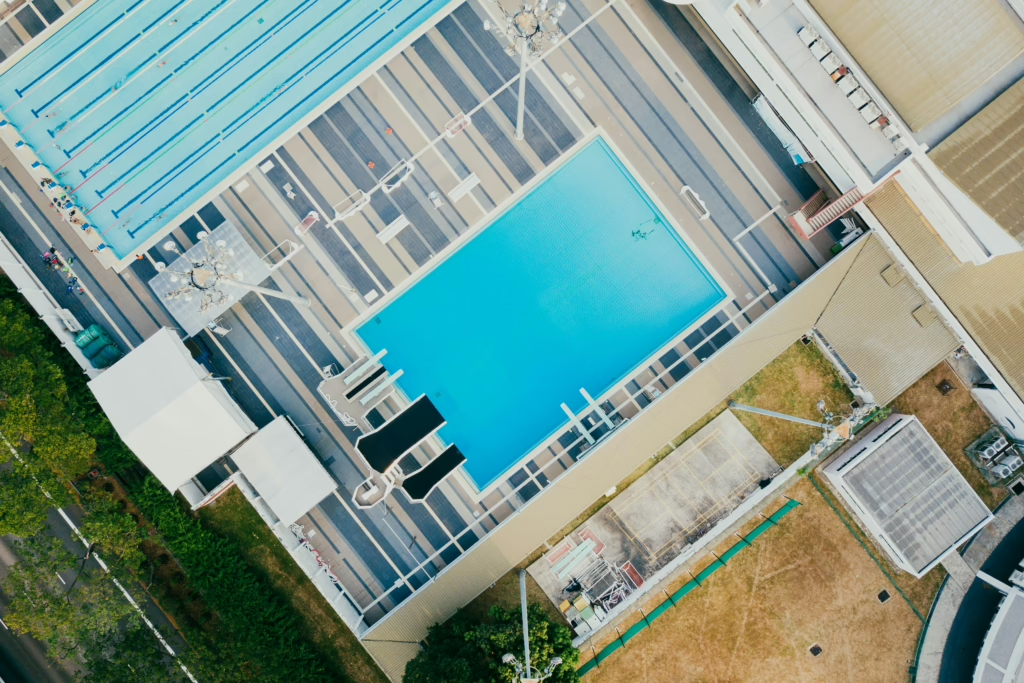Did you know that algae can grow in your pool at a rate of up to 30% per day when conditions are perfect? That green cloud floating in your once-pristine pool isn’t just an eyesore—it’s a rapidly multiplying organism that requires immediate attention. If you’ve been staring at your pool with frustration, wondering how it transformed from crystal clear to swamp-like seemingly overnight, you’re not alone.
Swimming pool maintenance is a year-round commitment, especially in sunny climates where warm temperatures create the perfect breeding ground for algae. Whether you’ve just discovered the first hints of green tinting the water or you’re dealing with a full-blown algae bloom, understanding how to tackle this common issue is essential for any pool owner. If you’re searching for “algae removal near me,” finding reliable information and professional service providers can make all the difference in restoring your pool to its sparkling best.
In this comprehensive guide, we’ll dive into everything you need to know about pool algae—from identifying the different types to effective removal strategies and prevention techniques. We’ll explore both DIY approaches for the hands-on homeowner and professional solutions for those stubborn cases. By the end, you’ll have the knowledge and resources to make informed decisions about maintaining a clean, healthy swimming environment that you and your family can enjoy all season long.
Understanding Pool Algae: Know Your Enemy
1. Green Algae: The Common Culprit
Green algae is what most people picture when they think of pool problems. It appears as a greenish tint in the water that can progress to floating clumps or a full-blown “pea soup” situation. This variety thrives in sunlight and warm temperatures, making it particularly common during summer months.
Green algae is relatively easy to treat compared to other types, responding well to proper chlorination and basic algaecides. The key is catching it early—before it turns your Tuesday afternoon pool party into an embarrassing cancellation.
2. Black Algae: The Stubborn Invader
Black algae is the marathoner of the algae world—persistent and difficult to eliminate completely. It presents as dark, blue-black spots that can appear on plaster surfaces, in grout lines, and in other porous areas of your pool.
What makes black algae particularly challenging is its protective outer layer and root-like structures that burrow into surfaces. Simply treating the water won’t eliminate it—you’ll need elbow grease and specialized treatments to break through its defenses and remove it completely.
3. Yellow Algae: The Sneaky Impostor
Often mistaken for sand or dirt collecting on the shaded sides of your pool, yellow (or mustard) algae is actually a form of green algae that appears yellowish-brown. It doesn’t float freely in the water but instead clings to pool walls and floors.
Yellow algae is chlorine-resistant, making it more challenging to treat than its green cousin. It prefers shaded areas and can return quickly if not completely eradicated. Don’t be fooled by its subtle appearance—yellow algae requires prompt attention before it spreads.
4. Pink “Algae”: The Bacterial Visitor
Despite its common name, pink “algae” isn’t algae at all—it’s actually a type of bacteria. It appears as pinkish slime in damp areas around your pool, particularly in corners, around ladders, and behind light fixtures.
This bacterial growth thrives in areas with poor circulation and can indicate issues with your sanitizer levels. While not as aggressive as true algae, pink slime should still be addressed promptly to maintain proper pool hygiene.
Why Is Algae Growing in My Pool? Understanding the Root Causes
1. Chemical Imbalance: The Invitation to Algae
Think of your pool’s chemical balance as its immune system. When chlorine levels drop too low or pH levels drift out of the ideal range (7.2-7.6), you’re essentially rolling out the welcome mat for algae. Regular testing is crucial—especially after heavy use, rainfall, or extreme heat.
Maintaining proper sanitizer levels is your first line of defense. Free chlorine should generally be kept between 1-3 ppm (parts per million) to effectively prevent algae growth. When these levels drop, algae spores—which are constantly landing in your pool—have the opportunity to establish and multiply.
2. Poor Circulation and Filtration: The Hidden Culprit
Even with perfect chemical levels, poor water circulation creates stagnant areas where algae can take hold. Your pool’s filtration system should be running long enough each day (typically 8-12 hours) to ensure complete water turnover.
Check for clogged filters, malfunctioning pumps, and areas with poor circulation. Dead spots in corners or behind ladders are prime real estate for algae colonization. Regular backwashing or cleaning of your filter ensures it can efficiently remove particles that contribute to algae growth.
3. Environmental Factors: Nature’s Contribution
Mother Nature plays a significant role in algae development. Warm temperatures accelerate growth, while wind and rain can introduce new algae spores and organic matter that feed existing colonies.
Nearby trees, gardens, and even lawn fertilizer can contribute nutrients that algae need to thrive. While you can’t control the weather, being aware of these environmental influences helps you increase vigilance during high-risk periods.
Your Step-by-Step Algae Elimination Plan
1. Assess and Identify: Know What You’re Fighting
Before diving into treatment, take time to properly identify which type of algae you’re dealing with. This assessment will determine your approach and the products you’ll need. Test your water parameters as well—knowing your starting point for chlorine, pH, and alkalinity will help you adjust them correctly.
Different algae types respond to different treatments. Using the wrong approach can waste time and money while allowing the problem to worsen. If you’re unsure, taking a water sample to a local pool supply store can provide professional insight.
2. Gather Your Arsenal: Tools and Products
Successful algae removal requires the right equipment. At minimum, you’ll need:
- A quality pool brush with appropriate bristles for your pool surface
- Chlorine shock treatment (calcium hypochlorite preferably)
- Algaecide appropriate for your specific algae type
- Pool vacuum (manual or automatic)
- Water testing kit with reagents for all important parameters
- Clean filter media or replacement cartridges
Having these tools ready before you begin ensures an efficient treatment process without interruptions.
3. Shock Treatment: The Powerful First Strike
Shocking your pool with a high dose of chlorine is often the most effective first step against algae. This process, known as superchlorination, rapidly raises the free chlorine level to kill algae cells. For green algae, you might need to double or triple the normal shock dosage, while black algae may require even higher levels.
Always shock your pool in the evening to prevent the sun from degrading the chlorine before it can work effectively. Follow product directions carefully regarding dosage per gallon, and always pre-dissolve granular products before adding them to prevent surface staining.
4. Brush, Brush, Brush: The Physical Removal
Chemical treatments alone can’t do the whole job—physical removal is crucial, particularly for attached algae types. Thorough brushing of all pool surfaces helps dislodge algae colonies and breaks down their protective barriers, allowing chemicals to penetrate more effectively.
For black algae, use a stiff brush (steel for concrete pools, nylon for vinyl or fiberglass) and focus extra attention on affected areas. For green or yellow algae, brushing the entire pool helps prevent colonies from reestablishing in missed spots.
5. Filter and Vacuum: Clearing the Debris
After shocking and brushing, algae cells will be dead or dying and need to be physically removed from the water. Run your filtration system continuously during treatment, cleaning or backwashing the filter frequently as it captures dead algae.
For severe blooms, vacuum the pool manually in “waste” mode (bypassing the filter) to prevent clogging your system with large amounts of dead algae. This is especially important with green water, as the filter can quickly become overwhelmed.
6. Test and Balance: Restoring Healthy Water Chemistry
Once the visible algae is gone, testing and rebalancing your water is essential. Adjust pH (7.2-7.6), alkalinity (80-120 ppm), and calcium hardness (200-400 ppm) to ideal ranges. Maintain a higher-than-normal chlorine level (3-5 ppm) for several days after treatment to prevent regrowth.
This is also the time to add a maintenance dose of algaecide as a preventive measure. Some algaecides provide ongoing protection against new spores establishing in your pool.
DIY vs. Professional Help: Making the Right Choice
1. When to Handle It Yourself: Manageable Situations
Light to moderate green algae blooms are often manageable for DIY treatment. If your pool has recently turned slightly green or has some isolated patches of algae, you can likely handle the situation yourself with the proper supplies and knowledge.
The advantage of DIY treatment is cost savings and the satisfaction of solving the problem independently. Many pool owners develop a regular maintenance routine that effectively prevents algae before it becomes established.
2. When to Call the Professionals: Challenging Scenarios
Some situations warrant professional intervention:
- Severe black algae infestations, especially in older pools with porous surfaces
- Recurring algae problems despite proper treatment
- Pools that have been neglected for extended periods
- Situations where underlying equipment issues may be contributing to the problem
- When you lack the time or physical ability to perform thorough treatment
Professional services bring specialized equipment, commercial-grade products, and experienced techniques that can resolve challenging situations more efficiently.
3. Finding Quality Professional Help
When searching for “algae removal near me,” look for companies with:
- Specific experience with your type of pool (concrete, vinyl, fiberglass)
- Certification through industry organizations
- Positive reviews specifically mentioning algae treatment success
- Transparent pricing and treatment plans
- Guarantees or follow-up services
A quality professional doesn’t just treat the current problem but helps you understand how to prevent future occurrences.
Prevention: The Best Algae Strategy
1. Regular Maintenance: The Foundation of Prevention
The most effective algae strategy is preventing it from taking hold in the first place. Establish a regular maintenance schedule that includes:
- Weekly water testing and chemical adjustments
- Regular brushing of walls and floor, even when algae isn’t visible
- Proper filtration run times (8-12 hours daily during swim season)
- Regular backwashing or filter cleaning
- Shock treatments every 1-2 weeks during peak season
Consistency is key—even short periods of neglect can provide the opportunity algae needs to establish.
2. Proactive Treatments: Stay One Step Ahead
Consider using preventive algaecides as part of your regular maintenance, especially during warm weather or after heavy rainfall. These products can provide ongoing protection between regular chlorine treatments.
Some pool owners also use phosphate removers to eliminate a key nutrient that algae needs to grow. While not necessary for everyone, these can be helpful in areas with high phosphate levels in the source water.
3. Environmental Management: Controlling External Factors
Minimize external contributions to algae growth by:
- Trimming overhanging trees and plants that drop debris into the pool
- Using pool covers when the pool isn’t in use for extended periods
- Being careful with lawn fertilizers near the pool area
- Requiring swimmers to rinse off before entering the pool
- Properly maintaining surrounding landscaping to reduce organic matter
These practices reduce the nutrient load and number of spores entering your pool, making maintenance easier.
Frequently Asked Questions:
1. Is it safe to swim in a pool with algae?
Swimming in a pool with algae isn’t recommended for several reasons. Algae can harbor bacteria and other microorganisms that may cause skin irritations, ear infections, or gastrointestinal issues. Additionally, algae makes surfaces slippery, increasing the risk of falls. Finally, algae reduces visibility in the water, creating a potential safety hazard, especially for children or weaker swimmers.
2. How quickly can algae grow in a pool?
Under ideal conditions (warm water, sunlight, and insufficient sanitizer), algae can double its population every 24 hours. A small, barely noticeable patch on Monday can become a significant problem by Wednesday. This rapid growth rate is why prompt treatment and regular preventive maintenance are so important.
3. Will chlorine alone kill all types of algae?
While chlorine is effective against most green algae, black and yellow varieties have developed resistance to normal chlorine levels. Black algae, in particular, creates a protective layer that prevents chlorine from reaching the cells underneath. These types typically require a combination of very high chlorine levels, specialized algaecides, and physical removal through brushing.
4. Why does my pool get algae even though I maintain proper chlorine levels?
Several factors beyond chlorine can contribute to algae growth. High pH reduces chlorine effectiveness, while high stabilizer levels (cyanuric acid) can “lock up” chlorine. Poor circulation creates dead spots where chlorine doesn’t reach effectively. Environmental factors like heavy rain, wind, and high temperatures can also challenge even well-maintained pools.
5. Can algae return after treatment?
Absolutely. Algae spores are constantly present in the air and can be introduced to your pool through wind, rain, or even on swimmers’ bodies. Without ongoing preventive measures, these spores can establish new colonies whenever conditions become favorable. This is why regular maintenance is essential even after successful treatment.
Final Thoughts
Dealing with pool algae may seem like an endless battle, but armed with the right knowledge and approach, it’s one you can definitely win. Remember that consistency is key—regular testing, proper chemical balance, and routine physical maintenance will prevent most algae problems before they start. When issues do arise, prompt action prevents small problems from becoming major headaches.
If you’re looking for dependable algae removal near me, PoolLogic offers comprehensive services tailored to your needs. Our team specializes in both emergency algae treatments and preventive maintenance programs that keep your pool crystal clear year-round. With our 5-minute setup process, you can quickly schedule an assessment and be on your way to algae-free swimming in no time.
Ready for better pool care? Contact us today to schedule a consultation and take the first step toward a consistently clean, inviting pool that enhances your home’s value and your family’s enjoyment. After all, your pool should be a source of relaxation and fun—not a constant maintenance headache.



